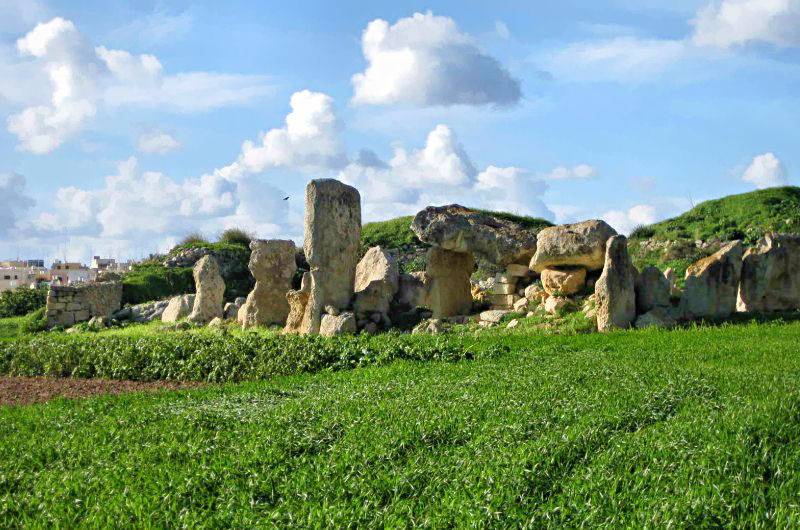Borġ in-Nadur stands as a significant archaeological site located in the open fields overlooking St George’s Bay, near Birżebbuġa, Malta. This site is unique as it encompasses remnants from two distinct periods of Maltese prehistory: a Tarxien phase megalithic temple dating back to around 2500 BC and the remains of a Bronze Age village, including Malta’s earliest known fortification.
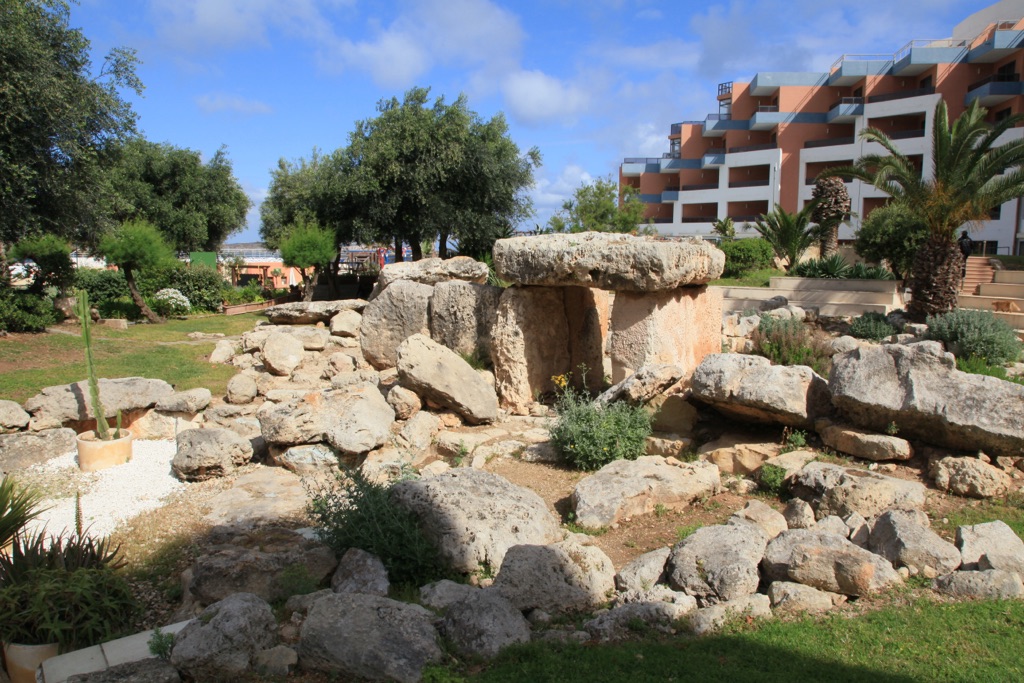
Buġibba Temple
The Buġibba Temple, a megalithic structure located on the border of Buġibba and Qawra towns within the limits of St. Paul’s Bay, Malta, represents a significant archaeological site from the Tarxien phase of Maltese prehistory. Despite its relatively small size, the temple’s remnants offer valuable insights into the architectural and religious practices of prehistoric Malta. The temple, constructed from coralline limestone, features a distinctive façade, a trilithon entrance, and a corridor leading to a central area with three apses. Notably, part of the temple’s original floor has survived at the back of the site. However, much of the structure has been lost over time, primarily due to agricultural activities that leveled the area.
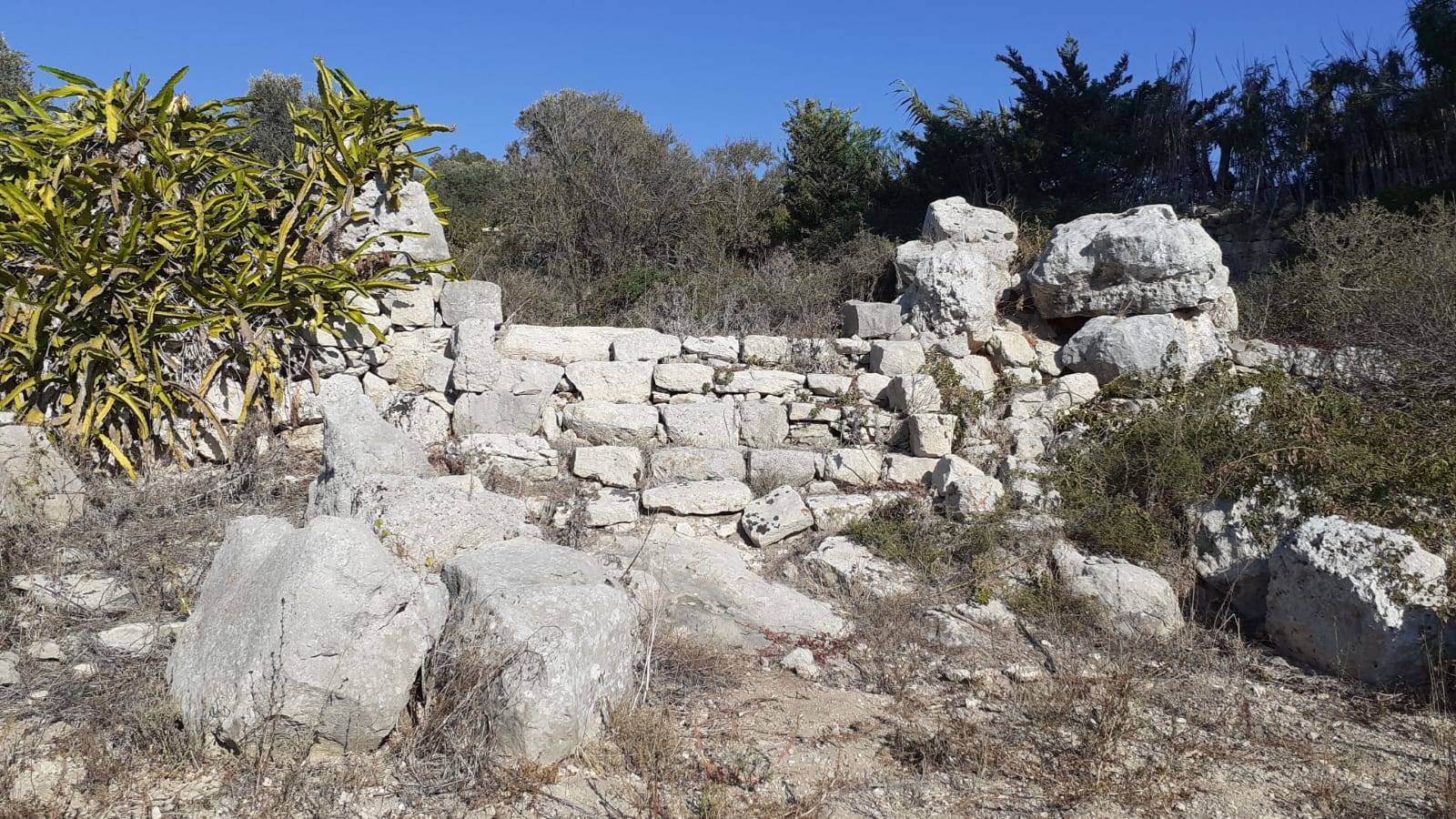
Tal-Qadi Temple
The Tal-Qadi Temple, situated in Salina within the limits of Naxxar, Malta, represents a significant yet enigmatic piece of Maltese prehistoric architecture. Unlike the majority of megalithic temples on the island, which are in a relatively better state of preservation, Tal-Qadi stands out not only for its unique orientation but also for its current poor condition, with only the general outline of the temple discernible today.
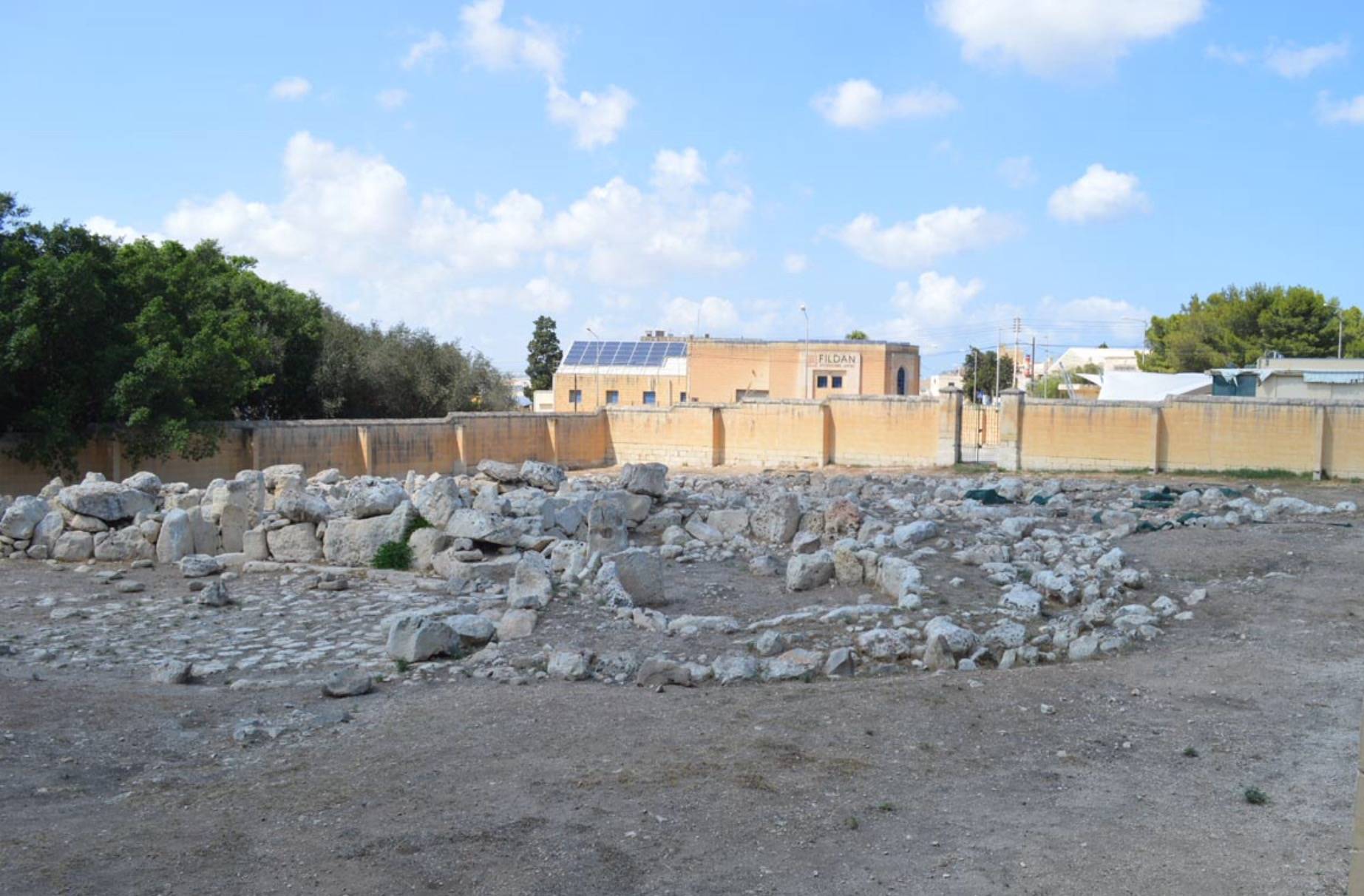
Kordin Temples
The Kordin Temples, situated on the Corradino Heights in Paola, Malta, represent a significant chapter in the archipelago’s prehistoric period. These megalithic structures, once part of a larger complex, offer insight into the religious and daily lives of the island’s ancient inhabitants. This post delves into the history, excavation, and current state of the Kordin Temples, focusing on the surviving Kordin III site.
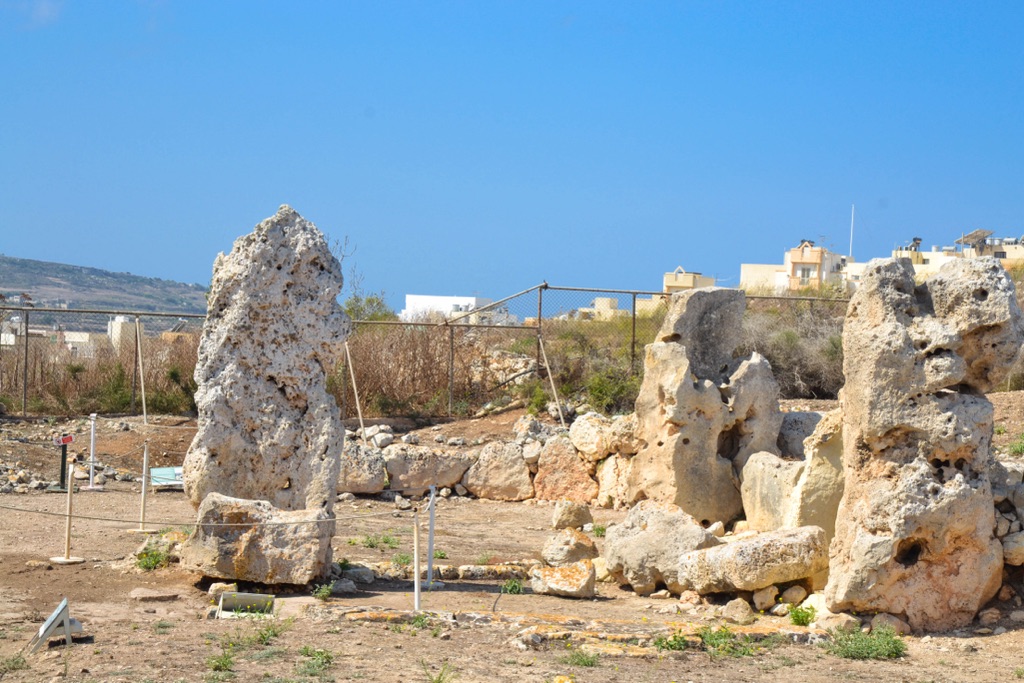
Skorba Temples
The Skorba temples, located on the northern edge of Żebbiegħ in Malta, stand as a testament to the island’s rich Neolithic culture. Despite their less preserved state compared to other megalithic sites like Ħaġar Qim and Tarxien, the Skorba temples offer invaluable insights into the prehistoric era of Malta. Excavated in the early 1960s by David H. Trump, this site has filled significant gaps in our understanding of Maltese Neolithic society, thanks to the application of modern archaeological methods.
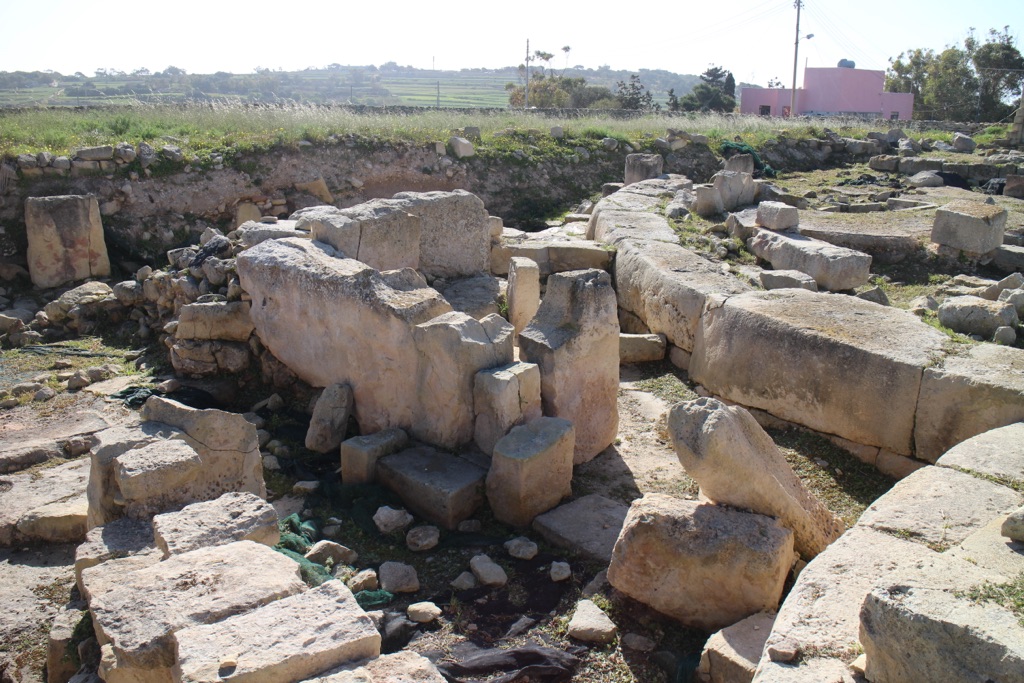
Tas-Silġ
Tas-Silġ, a rounded hilltop located on the south-east coast of Malta, near the town of Żejtun and overlooking Marsaxlokk Bay, stands as a testament to the island’s rich and diverse historical past. This site encapsulates a broad spectrum of historical periods, spanning from the Neolithic era to the ninth century AD. Its archaeological significance is underscored by the remnants of a megalithic temple complex dating back to the early third millennium BC, a Phoenician and Punic sanctuary dedicated to the goddess Astarte, and its later transformation into a Roman religious complex dedicated to Juno.

